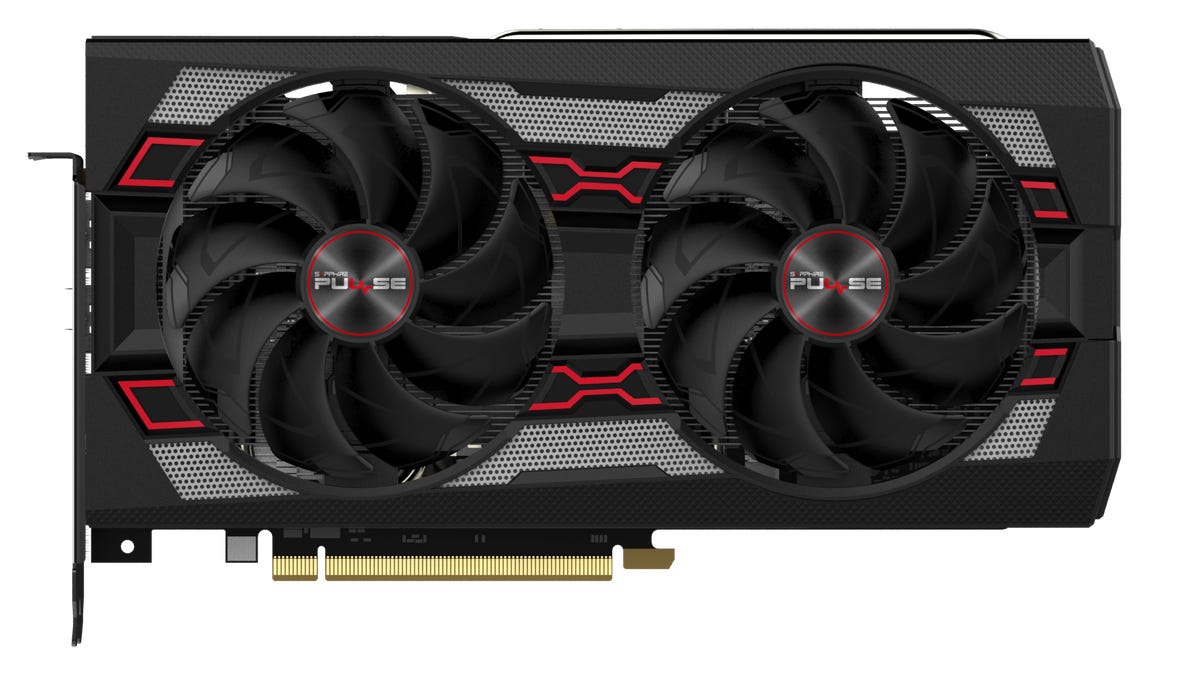AMD delivers the details on the Radeon RX 5600 XT
The company's sub-$300 1080p graphics card arrives today.

The Sapphire Pulse Radeon RX 5600 XT
Like the stairways at Hogwarts, the competitive field of graphics cards keeps shifting under our feet. When AMD introduced its newest GPU at CES, the Radeon RX 5600 XT, it claimed a noteworthy performance advantage -- anywhere from 5 to 33%, depending on the game -- over the GeForce GTX 1660 Ti, which is Nvidia's competitor in the top-quality 1080p gaming segment at the Radeon's target $280 price. It goes on sale and becomes fair game for benchmark testing today.
Nvidia decided to drop the price of its RTX 2060 Founder's Edition by $50 to $299 just last week, putting the card within spitting distance for price and performance, and confusing us again. But that may not be as big a deal as it sounds. Nvidia's Founders Edition cards are just one option among many, and competing add-in-board manufacturers tend to offer more features, advanced cooling and more aggressive overclocking for higher prices -- and it remains to be seen if those prices will drop, as well as where the prices for the RX 5600 XT actually end up.
Then again, AMD also sees the 5600 XT as the natural upgrade from a GTX 1060. But again, Nvidia just offered those buyers an option at the right price with the 2060 Founder's Edition that keeps them in the fold while giving its future-looking RTX line a toehold in the under-$300 waters as it tries to shift people out of the older GTX technology.
If you're buying a PC from a major manufacturer, you may see it advertised with an XT-less RX 5600. That's a version of the card specifically for AMD's partners to incorporate into their ready-to-ship systems, and it has four fewer compute units (CU) than the XT model's 36 (since each CU contains 64 stream processors, there's a concomitant drop in that spec as well). AMD claims that for most games the performance should be relatively equivalent, and that the XT version leaves more overhead for more bandwidth-demanding future games.
AMD's PC gaming GPU lineup
| AMD Radeon RX 5500 XT | AMD Radeon RX 5600 XT | AMD Radeon RX 5700 XT | |
|---|---|---|---|
| Memory | 4GB or 8GB GDDR6 | 6GB GDDR6 | 8GB GDDR6 |
| Memory bandwidth (GB/sec) | 224 | 288 | 448 |
| GPU clock Speed (MHz, base/boost) | 1,717/1,845 | 1,375/1,560 | 1,605/1,905 |
| Memory data rate/Interface | 14Gbps/128 bit | 14Gbps/192 bit | 14Gbps/256 bit |
| Stream cores | 1,408 | 2,304 | 2,560 |
| Compute Units | 22 | 36 | 40 |
| FP32 maximum performance (TFLOPS) | 5.2 | 7.2 | 9.8 |
| Power requirement (watts) | 130 | 150 | 225 |
The RX 5600 XT is a middle child following in the footsteps of its big brother, the RX 5700 XT, and little brother, the RX 5500 XT. It slotts in to replace the older RX 590 with the current Navi 7nm generation. It's AMD's first card with 6GB of memory, and while that's less than the 8GB versions of the lower-end RX 5500 XT, it makes up the difference in increased memory bandwidth: You get 224MB per second vs. 288MB/sec. In other words, because the textures move out of the frame buffer more quickly, they don't need as much memory to hang around in. And even AMD admits that most games (at least at 1080p) don't benefit from anything over 4GB at the moment.

